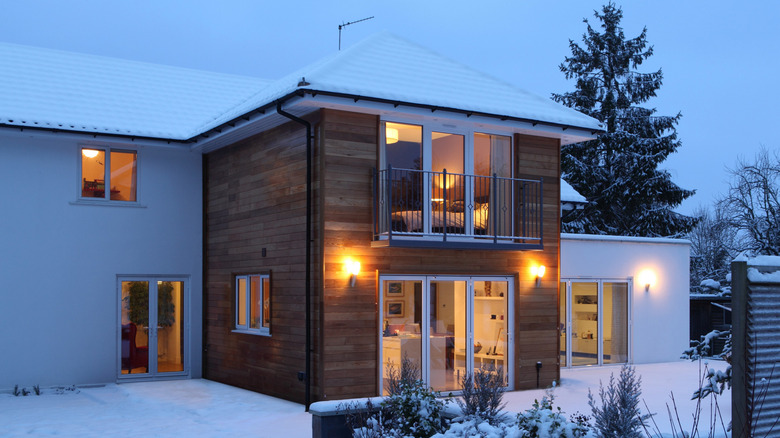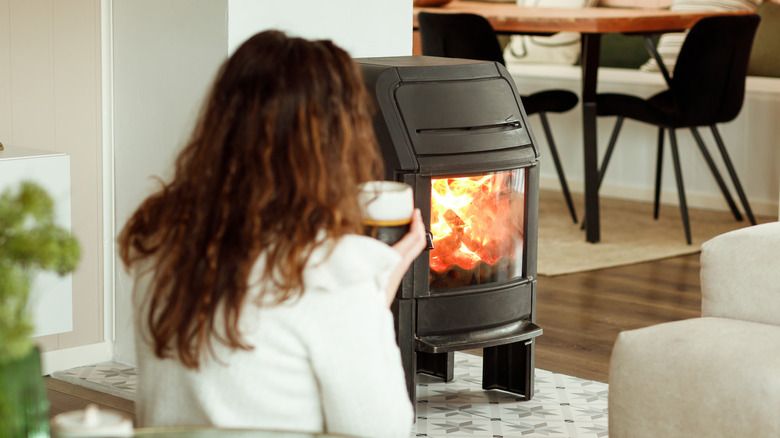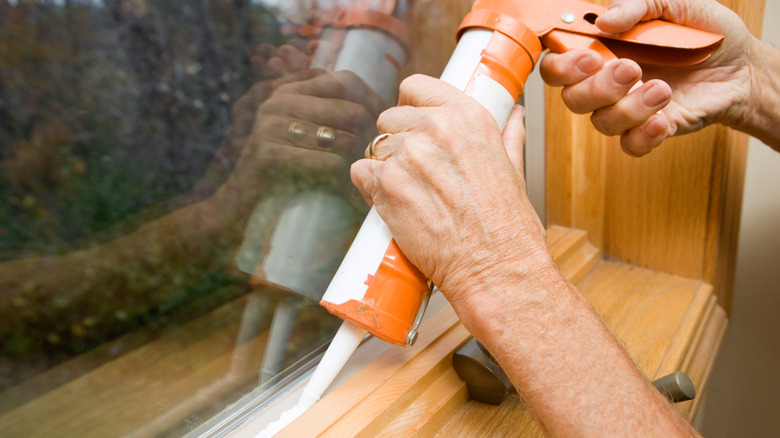Eco-Friendly Heating Tips To Save Money During Winter
We may receive a commission on purchases made from links.
No matter where you live, at some point, you'll find yourself in a cold snap. Of course, "cold" is a relative term depending on your climate, but when cold weather hits, you'll want to stay as warm as possible without breaking the bank. There are several steps you can take to make sure that you're saving energy and money when the degrees plummet. An obvious solution would be to turn down your thermostat ... but you also want to be comfortable. Nobody wants to bundle up in layers and still see their frosty breath while trying to relax inside.
Instead, with a few smart choices, you can stay toasty all winter long. Home heating experts will tell you that one way to stay warm indoors while also saving money is to not only have an efficient and well-maintained HVAC system, but also to buy a smart thermostat. You've probably heard of Google Nest, Ecobee, or other brands that sell smart sensors to monitor room temperatures and self-adjust accordingly. Over time, these could save you hundreds or even thousands of dollars, easily paying for themselves. A public policy research group did a study of smart thermostat users in 2018, and found an almost 10% savings in heating costs.
Depending on where you live, that could add up to big savings in just one year. For the best results, it's recommended to leave your thermostat between 68 and 72 degrees in the winter months and set those temperatures back a few degrees when you know you won't be home. It's never advised to turn the system off completely because huge temperature swings could overwork your system.
Tap into other heat sources temporarily
If you're having a particularly cold stretch and the central heat just isn't quite cutting it, you can also make temporary use of other heat sources in smaller spaces. Items like gas or electric fireplaces, wood-burning stoves, or even space heaters. While it's true that these items will incur some costs of their own in firewood, gas, or electricity, think of them as stopgap measures just to take the edge off until things warm up. Generally speaking, electricity is more expensive than gas per kilowatt hour, so you want to be frugal with the use of space heaters. But a few hours of space heater use in a small bedroom or two could cost less than turning up the central heat.
Another eco-friendly room warming option is to run your ceiling fans in reverse on low. Almost all of them are built with a switch to reverse the direction of the fan blades to a clockwise rotation. The prevailing wisdom here is that since hot air rises, it's all floating around at ceiling height. Reversing your fan blades' direction can bring warm air back down where you can feel and enjoy it. If this works well in your space, you may even be able to set your heater back a degree or two.
Seal up those drafty cracks, but don't seal up unused rooms
While it may seem obvious, another eco-friendly way to keep your home warm and toasty in the winter months is to keep cold drafts at bay. Whether through windows, doors, walls, or foundations, all homes have spaces where cold air can seep in. The better you can seal them off, the warmer you will feel mid-winter. Additionally, your HVAC system will have an easier time keeping up with heat demands. This weather-proofing may involve installing blow-in insulation, using Magzo weather stripping, adding caulking or foam, hanging window treatments, installing something like Kayleinster door sweeps on exterior doors, or using draft stoppers in particularly chilly areas.
Although this may seem counter-intuitive, it's also recommended to keep doors and vents to unused areas of your house open slightly at all times. This promotes better airflow throughout the home which helps your heating system from becoming overworked on those really chilly days and nights.


